
 
................................ |
|
BIOGRAPHIES Counts Jakob Carl Johan Fredrik Adolf Ulrik Johan Adam Barons Carl Axel Fredrik Untitled Nobility Johan Gabriel Carl Olof |
| HOME | ORIGINS | HISTORY | BIOGRAPHIES | COAT OF ARMS | ABOUT |
|
Selected Biographies
Below is a selection of biographies from the more well known members of the Cronstedt family. The biographies are categorized according to the three main branches of the family. The Count's Family Jakob Cronstedt (1668-1751) “Mihi Cura Futuri” 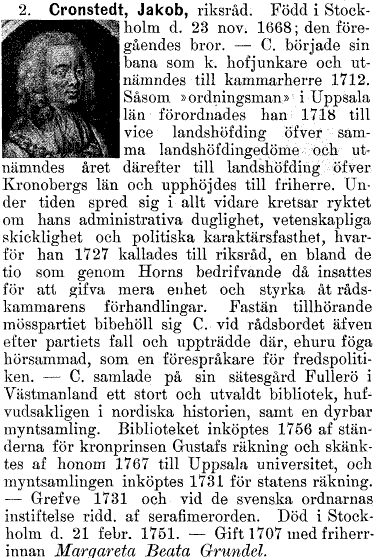
Source: Hofberg, Herman, Heurlin, Frithiof, Millqvist, Viktor, Rubenson, Olof, Svenskt biografiskt handlexikon, 1906 Carl Johan Cronstedt (1709-1777) Architect and Inventor 
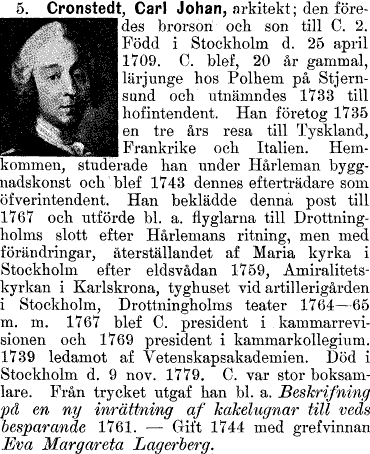
Source: Hofberg, Herman, Heurlin, Frithiof, Millqvist, Viktor, Rubenson, Olof, Svenskt biografiskt handlexikon, 1906 Fredrik Adolf Ulrik Cronstedt (1744-1829) 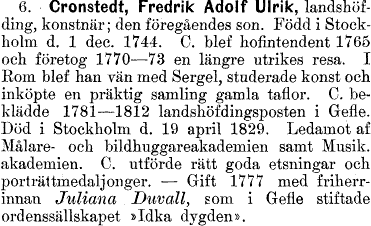
Source: Hofberg, Herman, Heurlin, Frithiof, Millqvist, Viktor, Rubenson, Olof, Svenskt biografiskt handlexikon, 1906 Johan Adam Cronstedt (1749-1836) 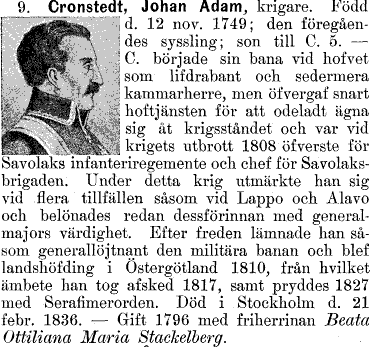
Source: Hofberg, Herman, Heurlin, Frithiof, Millqvist, Viktor, Rubenson, Olof, Svenskt biografiskt handlexikon, 1906 The Baronial Family Carl Cronstedt (1672 - 1750) General and Commander of the Artillery 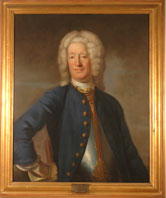
   Source: Hofberg, Herman, Heurlin, Frithiof, Millqvist, Viktor, Rubenson, Olof, Svenskt biografiskt handlexikon, 1906 Axel Fredrik Cronstedt (1722-1765) Chemist, Mineralogist and Metallurgist 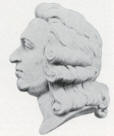
Axel Fredrik Cronstedt was a mining expert with the Bureau of Mines, a chemist and a metallurgist, who is remembered for his discovery of nickel in 1751. His father was an officer in the Swedish military, and Cronstedt was expected to follow his father's career. However, apart from a short spell during wartime, he did not serve in the army. He studied maths at Uppsala and eventually became a prominent expert in mining. To give himself more of a grounding in scientific methods, he enrolled in a course entitled "The Art of Experiment and Chemistry," given by Georg Brandt (1694-1768), the discoverer of cobalt. Cronstedt, in his study of metals, was the first to systematically use blowpipe analysis (where a small sample is burned in an intense flame and the colours produced are analysed to determine the sample's makeup). While he did not invent this method, it was Cronstedt who developed it as a useful scientific tool, and it remained in wide use until the introduction of the diffraction grating. The discovery of nickel was only proved beyond all doubt by Bergman in 1775 - after his death - but Cronstedt was the first to identify 'kupfernickel' ("the devil's copper", as miners of the day called it) as metal in its own right, rather than a combination of copper, arsenic and other metals, as was generally believed by his contemporaries. Cronstedt also introduced a new classification of metals, based on their chemical structures rather than just their appearances. Axel Fredrik Cronstedt was a pupil of Georg Brandt, the discoveror of cobalt. Notable publications: Försök til mineralogie, eller mineralrikets upställning (Translated into English as 'An Essay Towards a System of Mineralogy'), (1758) List of sources for the biographical information: Gillispie, Charles CDictionary of Scientific Biography, vol III(New York,Scribner's,1971) Asimov, Isaac, Asimov's Biographical Encyclopaedia of Science and Technology, (New York , Doubleday, 1964) 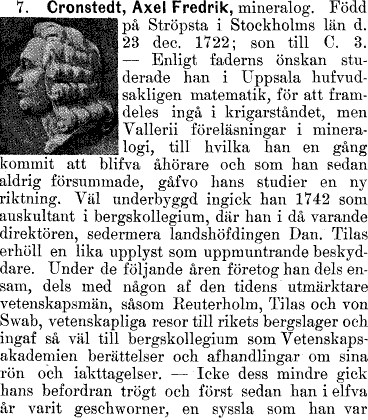 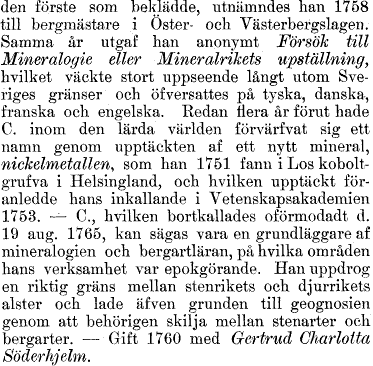 Source: Hofberg, Herman, Heurlin, Frithiof, Millqvist, Viktor, Rubenson, Olof, Svenskt biografiskt handlexikon, 1906 The Untitled Nobility Family Johan Cronstedt (1660-1997) 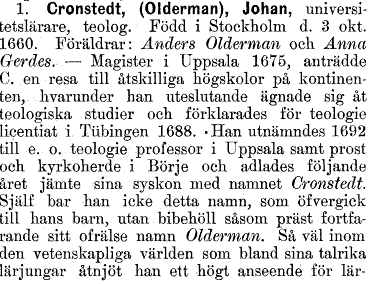  Source: Hofberg, Herman, Heurlin, Frithiof, Millqvist, Viktor, Rubenson, Olof, Svenskt biografiskt handlexikon, 1906 Gabriel Cronstedt (1670-1757) 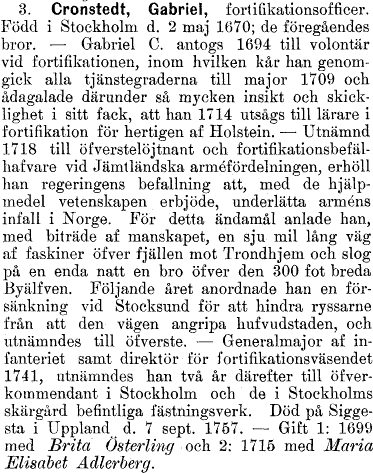
Source: Hofberg, Herman, Heurlin, Frithiof, Millqvist, Viktor, Rubenson, Olof, Svenskt biografiskt handlexikon, 1906 Carl Olof Cronstedt (1756-1820) 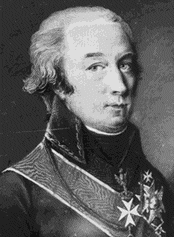
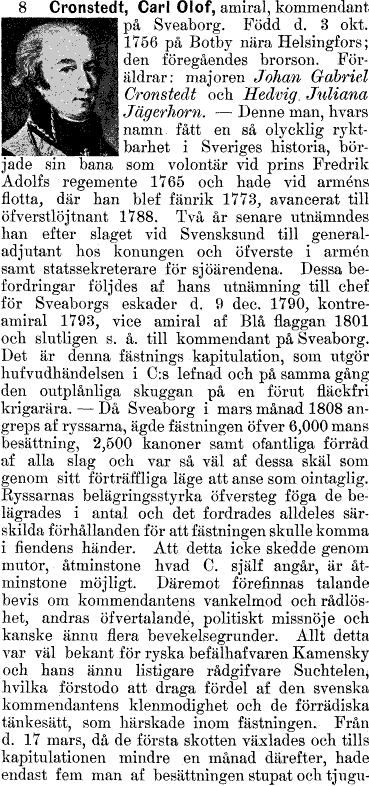 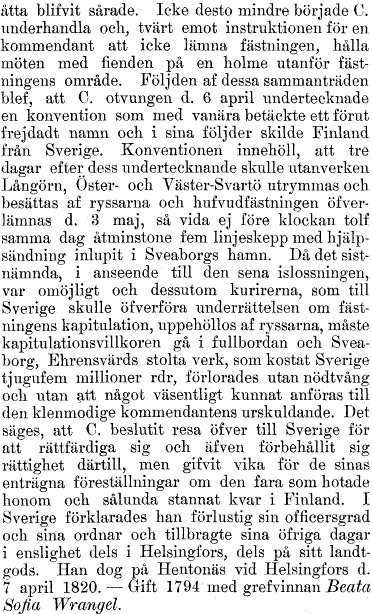 Source: Hofberg, Herman, Heurlin, Frithiof, Millqvist, Viktor, Rubenson, Olof, Svenskt biografiskt handlexikon, 1906 |